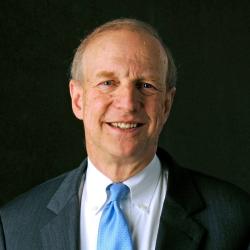Over the past quarter century, private
pension plans in the United States have
trended toward a do-it-yourself approach,
in which covered workers bear more
investment risk and make more of their
own decisions about their retirement
savings. Some workers have thrived
under this more individualized approach,
amassing sizable balances in 401(k)s and
similar plans, which will assure them a
comfortable and relatively secure
retirement income.
For others, however, the 401(k) revolution
has fallen short of its potential. Work,
family, and other more immediate
demands often distract workers from the
need to save and invest for the future.
Those who do take the time to consider
their choices find the decisions quite
complex: individual financial planning is
seldom a simple task. For many workers,
the result is poor decision making at each
stage of the retirement savings process,
putting both the level and the security of
their retirement income at risk. Even
worse, in the face of such difficult
choices, many people simply
procrastinate and thereby avoid dealing
with the issues altogether, which
dramatically raises the likelihood that they
will not save enough for retirement.
A disarmingly simple concept—what we
call the “automatic 401(k)”—has the
potential to cut through this Gordian knot
and improve retirement security for millions
of workers through a set of common sense
reforms. In a nutshell, the automatic 401(k)
consists of changing the default option at
each phase of the 401(k) savings cycle to
make sound saving and investment
decisions the norm, even when the worker
never gets around to making a choice in
the first place. Given the current structure
of most 401(k) plans, workers do not
participate unless they actively choose to.
In contrast, under an automatic 401(k) they
would participate unless they actively choose not to—and similarly for each
major decision thereafter. Contributions
would be made, increased gradually over
time, invested prudently, and preserved for
retirement, all without putting the onus on
workers to take the initiative for any of
these steps. At the same time, however,
workers would remain free to override the
default options—to choose whether or not
to save, and to control how their savings
are invested—but those who fail to exercise
the initiative would not be left behind.
The steps involved in building an
automatic 401(k) are not complicated, and
the benefits could be substantial; indeed,
a growing body of empirical evidence
suggests that the automatic 401(k) may be
the most promising approach to bolstering
retirement security for millions of American
families. A number of economists have
undertaken important research and
contributed practical suggestions
concerning the actual and potential uses
of automatic enrollment and related default
arrangements in 401(k) plans.1 Drawing
on their contributions, this policy brief
describes the motivation for, the features
of, and the potential benefits of the
automatic 401(k).
The Brookings Institution is committed to quality, independence, and impact.
We are supported by a diverse array of funders. In line with our values and policies, each Brookings publication represents the sole views of its author(s).





